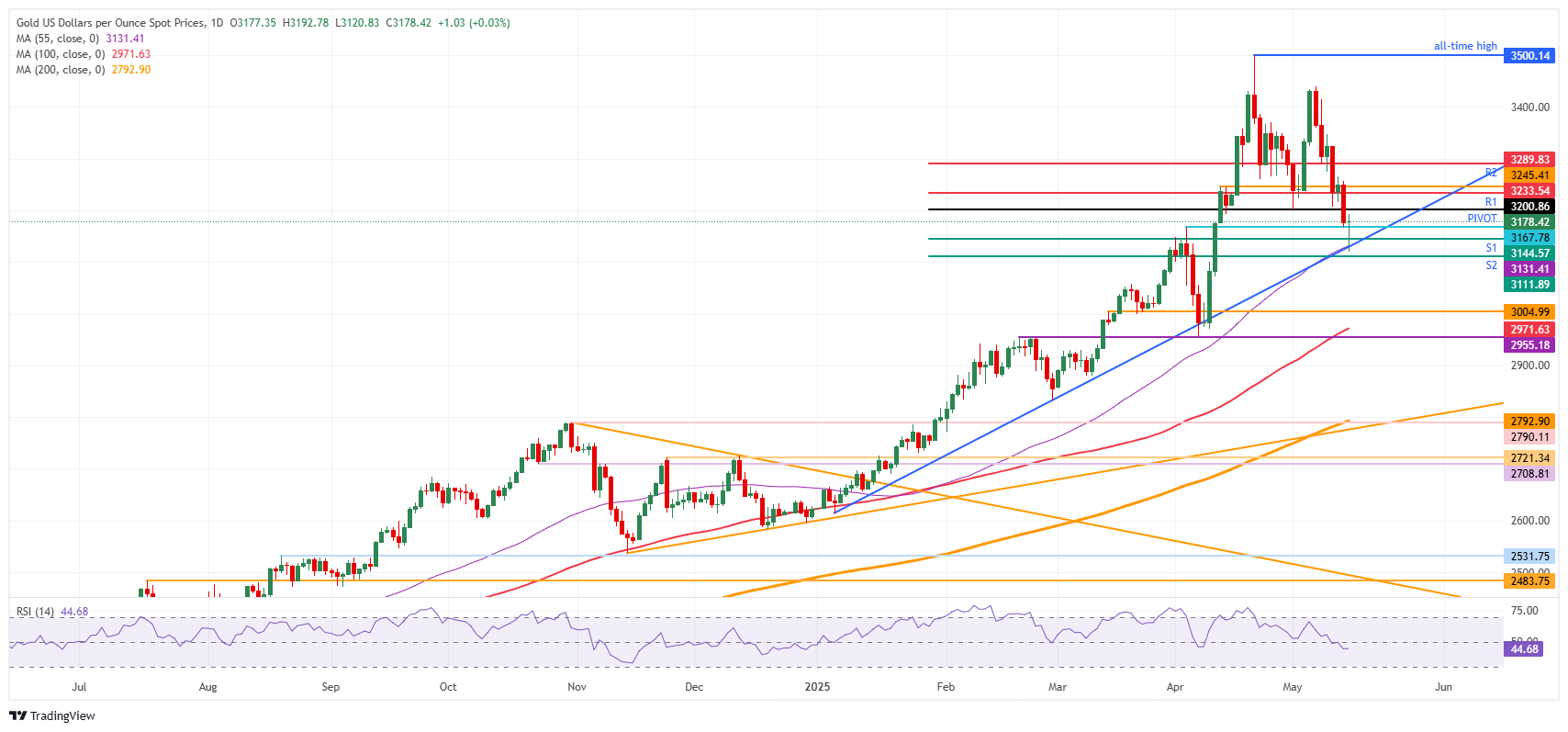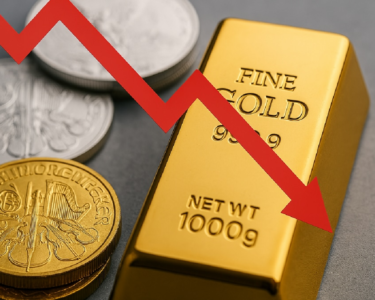- Gold price down nearly 10% from its all-time high.
- Traders zoom in on Turkey where peace talks on Ukraine and Russia are set to take place.
- Bullion traders could expect Gold to retest the $3,000 level if further easing and Ukraine-Russia truce would materialize.
Gold (XAU/USD) slides towards $3,175 at the time of writing on Thursday with tensions building towards the Ukraine-Russia talks taking place in Turkey. Earlier Gold dove lower after headlines from United States (US) President Donald Trump that led traders book more profits and sell more stake in their Gold holding. In his latest comments on Thursday during a visit to the Middle East, Trump said talks with Iran on a nuclear deal are possible, CNN reports. Trump added that both Syria and Yemen deserve a chance, which is seen as a huge step in defusing tensions in the Middle East.
These headlines led traders to sell Gold as they signal that global geopolitical tensions are easing. Meanwhile, progress in trade talks also added to bearish headwinds for the precious metal, with China suspending a ban on exports of items with both military and civil applications to 28 US companies. The détente between the two largest economies has reduced the bid for Gold already earlier this week, Bloomberg reports.
The attention for Gold traders also shifts to Turkey, where top US and European diplomats meet to discuss any possible breakthrough in the Russia-Ukraine war. Still, the chances of a major advance in the negotiations look unlikely as Russian President Vladimir Putin won’t attend the meetings.
Daily digest market movers: Rotation out of Gold
- US yields are not helping in the case for some upside reprieve in Gold prices. The US 10-year benchmark rate keeps climbing higher towards 4.54% in early Thursday trading, way above the 4.11% seen at the start of May.
- On Wednesday, Vice Chair Philip Jefferson said that the Federal Reserve’s (Fed) policy is well positioned to respond in a timely way on a surprise drop or surge in inflation. Jefferson added that there is a high uncertainty that inflationary pressures would be temporary. Prospects of high interest rates for longer weigh on non-interest-bearing assets such as Gold.
- Hedge funds are rebalancing their holdings on Gold. First Eagle Investments’ $59 billion global fund, for example, maneuvered through April’s plunging markets by selling Gold and using the proceeds to buy freshly discounted stocks. The rebalancing trade helped the portfolio ride the rebound in equities and boosted its returns to almost 10% this year. Matthew McLennan of the First Eagle Global Fund is still bullish on Gold, but trimmed the position to prevent the fund from becoming overly concentrated, Bloomberg reports.
Gold Price Technical Analysis: Much needed for some upside
Gold is now quickly racking up losses and looks set to be facing some more downturn. Easing geopolitical tensions, trade war fears, and the Fed likely to keep its monetary policy unchanged for longer, all bearish elements for the Gold price, are eating away at its momentum. Once the 55-day Simple Moving Average (SMA) at $3,130 snaps and faces a daily close below, there is not much is in the way to avoid the Gold price from dropping towards $3,000 and lower.
On the upside, the pivotal technical level at $3,167 (April 3 high)is now overturned into a resistance and could be difficult to reclaim. Once through there, the daily Pivot Point comes in line with the big $3,200 figure. In case that level can be recovered, the R1 resistance at $3,233 and the R2 resistance at $3,289 are the following levels to watch, though a major catalyst would be needed to get it there.
On the other side, as already mentioned above, one level to watch is the 55-day SMA at $3,130. Once that gives way, the technical level at $3,004 (March 14 high), which roughly coincides with the $3,000 big marker, could be quickly tested. Further down, the 100-day SMA at $2,971 is the bottom level foreseen for now.

XAU/USD: Daily Chart
Tariffs FAQs
Tariffs are customs duties levied on certain merchandise imports or a category of products. Tariffs are designed to help local producers and manufacturers be more competitive in the market by providing a price advantage over similar goods that can be imported. Tariffs are widely used as tools of protectionism, along with trade barriers and import quotas.
Although tariffs and taxes both generate government revenue to fund public goods and services, they have several distinctions. Tariffs are prepaid at the port of entry, while taxes are paid at the time of purchase. Taxes are imposed on individual taxpayers and businesses, while tariffs are paid by importers.
There are two schools of thought among economists regarding the usage of tariffs. While some argue that tariffs are necessary to protect domestic industries and address trade imbalances, others see them as a harmful tool that could potentially drive prices higher over the long term and lead to a damaging trade war by encouraging tit-for-tat tariffs.
During the run-up to the presidential election in November 2024, Donald Trump made it clear that he intends to use tariffs to support the US economy and American producers. In 2024, Mexico, China and Canada accounted for 42% of total US imports. In this period, Mexico stood out as the top exporter with $466.6 billion, according to the US Census Bureau. Hence, Trump wants to focus on these three nations when imposing tariffs. He also plans to use the revenue generated through tariffs to lower personal income taxes.




